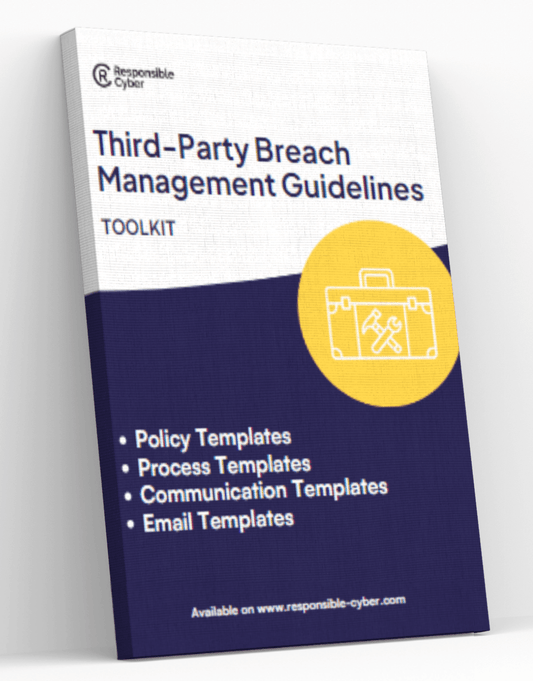Understanding the Digital Operational Resilience Act (DORA) and Third-Party Risk Management (TPRM)

As digital transformation accelerates across industries, the European Union has introduced the Digital Operational Resilience Act (DORA) to enhance the resilience of financial entities against ICT-related disruptions. This legislation has significant implications for Third-Party Risk Management (TPRM), emphasizing the need for robust frameworks to manage third-party risks. This article delves into DORA's requirements, its impact on TPRM, and best practices for compliance.
What is DORA?
DORA Overview: The Digital Operational Resilience Act (DORA) is part of the EU's Digital Finance Package, aimed at strengthening the ICT resilience of financial entities. It introduces comprehensive requirements for managing ICT risks, including those related to third-party providers. DORA applies to a wide range of financial entities, including banks, insurance companies, investment firms, and payment service providers.
Key Objectives:
- Enhance ICT risk management across the financial sector.
- Ensure financial entities can withstand, respond to, and recover from ICT-related disruptions.
- Strengthen oversight of critical third-party providers.
- Foster a culture of operational resilience within financial institutions.
Key Requirements of DORA
1. ICT Risk Management Framework
Comprehensive Policies: Financial entities must establish robust ICT risk management frameworks that include policies, procedures, and controls to manage ICT risks effectively. This involves identifying, assessing, and mitigating ICT risks.
Governance and Oversight: Senior management and boards of directors must oversee ICT risk management efforts, ensuring alignment with the organization’s overall risk management strategy. They are responsible for setting the tone at the top and fostering a culture of resilience.
2. Incident Reporting and Management
Incident Detection and Response: Organizations must implement robust mechanisms for detecting, managing, and reporting ICT-related incidents. This includes establishing incident response plans, conducting regular drills, and ensuring timely communication with stakeholders.
Regulatory Reporting: DORA mandates timely reporting of significant ICT incidents to relevant authorities. Financial entities must establish procedures to ensure compliance with these reporting requirements, including clear criteria for what constitutes a reportable incident.
3. ICT Third-Party Risk Management
Due Diligence and Risk Assessment: Before engaging third-party providers, financial entities must conduct thorough due diligence to assess their ICT risk management capabilities. This includes evaluating the provider’s security measures, compliance history, and operational resilience.
Contractual Requirements: Contracts with third-party providers must include specific provisions for ICT risk management. This covers data protection, incident reporting, audit rights, and termination clauses.
Continuous Monitoring: Financial entities must continuously monitor the ICT risks associated with third-party providers. This involves real-time monitoring, regular audits, and performance reviews to ensure ongoing compliance with DORA requirements.
4. Operational Resilience Testing
Testing and Simulation Exercises: Organizations must conduct regular operational resilience testing, including stress testing and simulation exercises. These tests should cover various scenarios to ensure preparedness for potential ICT disruptions.
Vulnerability Assessments: Regular vulnerability assessments and penetration testing are required to identify and mitigate weaknesses in ICT systems. Financial entities must address identified vulnerabilities promptly to enhance resilience.
5. Information Sharing and Collaboration
Industry Collaboration: DORA encourages financial entities to participate in information-sharing initiatives and collaborate with industry peers to enhance collective resilience against ICT risks.
Threat Intelligence Sharing: Organizations must establish mechanisms for sharing threat intelligence with relevant stakeholders, including regulators and industry bodies. This helps in anticipating and mitigating emerging ICT threats.
Impact on Third-Party Risk Management (TPRM)
Enhanced Oversight: DORA places significant emphasis on the oversight of third-party providers. Financial entities must ensure that third-party providers adhere to stringent ICT risk management standards. This requires robust due diligence, continuous monitoring, and comprehensive contractual agreements.
Increased Accountability: Under DORA, financial entities are accountable for managing ICT risks associated with third-party providers. This necessitates a proactive approach to TPRM, with clear accountability at the senior management and board levels.
Regulatory Scrutiny: Regulators will closely scrutinize how financial entities manage third-party risks. Non-compliance with DORA can result in severe penalties, including fines and reputational damage. Therefore, organizations must prioritize TPRM to meet regulatory expectations.
Operational Resilience: By implementing DORA’s requirements, financial entities can enhance their operational resilience. Effective TPRM ensures that third-party providers can support the organization’s ability to withstand, respond to, and recover from ICT disruptions.
Best Practices for DORA Compliance in TPRM
1. Establish a Centralized TPRM Framework
Integrated Approach: Develop a centralized TPRM framework that integrates with the organization’s overall risk management strategy. This ensures consistency and comprehensive oversight of third-party risks.
Clear Policies and Procedures: Establish clear policies and procedures for managing third-party risks, including due diligence, continuous monitoring, and incident response. Ensure these policies are communicated across the organization.
2. Conduct Thorough Due Diligence
Vendor Assessment: Perform thorough due diligence before engaging third-party providers. Assess their ICT risk management capabilities, security measures, and compliance with regulatory requirements.
Risk Categorization: Categorize third-party providers based on their risk profile. Focus on critical providers that have a significant impact on the organization’s operations and data security.
3. Implement Continuous Monitoring
Real-Time Monitoring Tools: Utilize real-time monitoring tools to track third-party activities continuously. Automated alerts and performance dashboards help detect and address potential risks promptly.
Regular Audits and Reviews: Schedule regular audits and reviews of third-party providers to ensure ongoing compliance with DORA. Update risk assessments based on audit findings and changes in the provider’s risk profile.
4. Strengthen Contractual Agreements
Detailed Contracts: Develop contracts that clearly outline ICT risk management requirements, including data protection, incident reporting, and audit rights. Ensure contracts are regularly reviewed and updated to reflect changes in regulatory requirements.
Termination Clauses: Include termination clauses that allow for the discontinuation of services if the third-party provider fails to comply with ICT risk management standards.
5. Enhance Incident Response Planning
Response Plans: Develop comprehensive incident response plans that detail steps for identifying, containing, and mitigating ICT incidents. Ensure these plans cover third-party providers and include specific roles and responsibilities.
Regular Drills: Conduct regular drills and simulation exercises to test and refine incident response plans. This ensures all stakeholders are prepared to respond effectively to incidents.
6. Foster a Culture of Resilience
Senior Management Involvement: Ensure senior management and boards of directors are actively involved in TPRM efforts. Their oversight and commitment are crucial for fostering a culture of resilience.
Employee Training: Provide regular training sessions for employees on the importance of TPRM and their role in managing third-party risks. Ensure they understand procedures for reporting suspicious activities and responding to incidents.
Conclusion
DORA represents a significant step towards enhancing ICT resilience across the European financial sector. For financial entities in the EU, including those in the UK post-Brexit, effective Third-Party Risk Management is crucial for compliance. By implementing comprehensive TPRM frameworks, conducting thorough due diligence, continuous monitoring, and robust incident response planning, organizations can ensure compliance with DORA and enhance their operational resilience.
As regulatory landscapes continue to evolve, staying informed and proactive in compliance efforts is essential for safeguarding data and maintaining business integrity. For further insights, explore resources from European Banking Authority (EBA) and European Securities and Markets Authority (ESMA).







